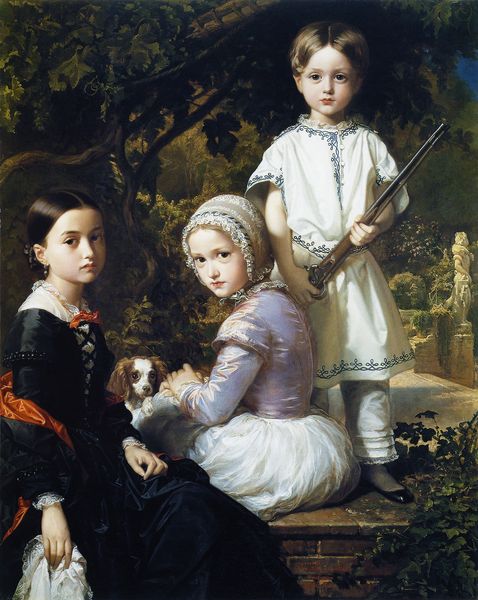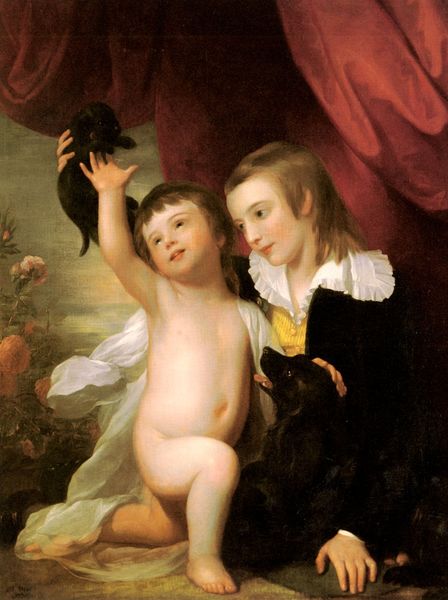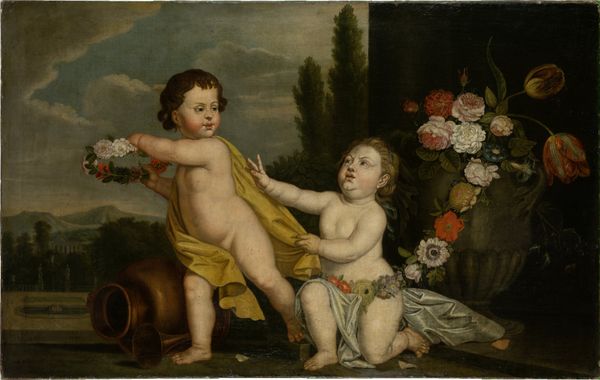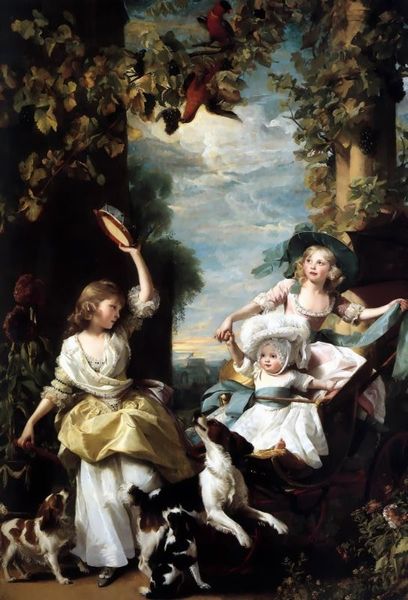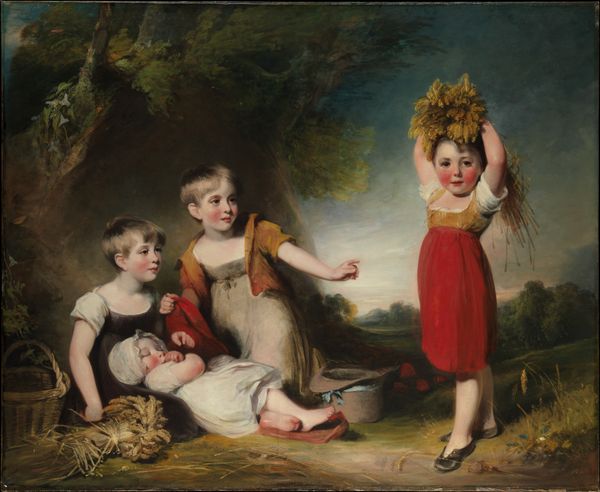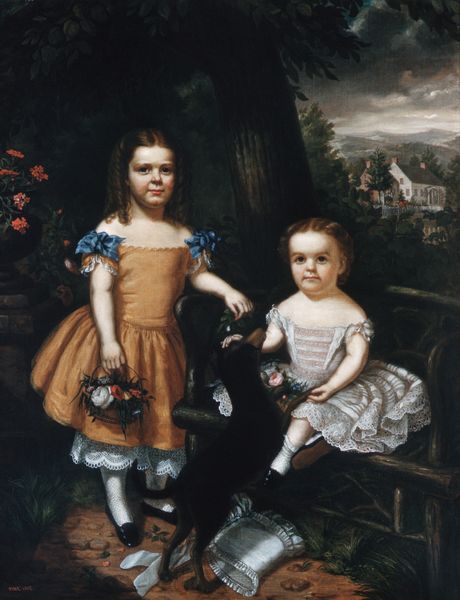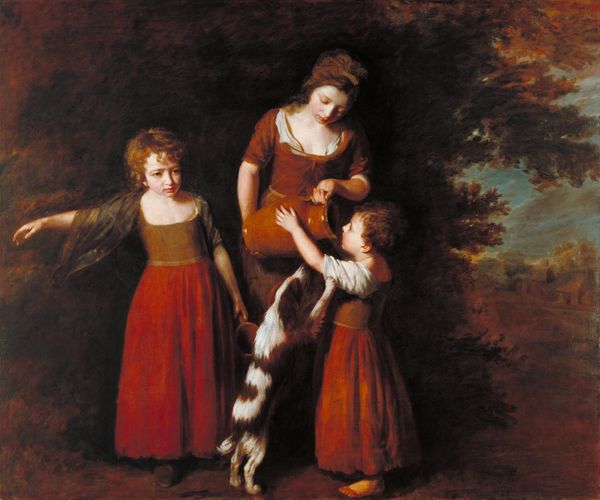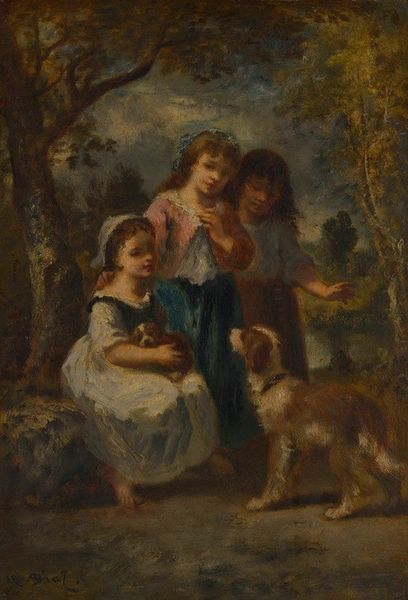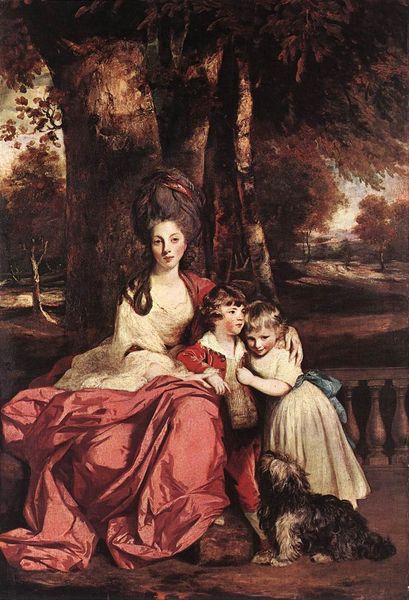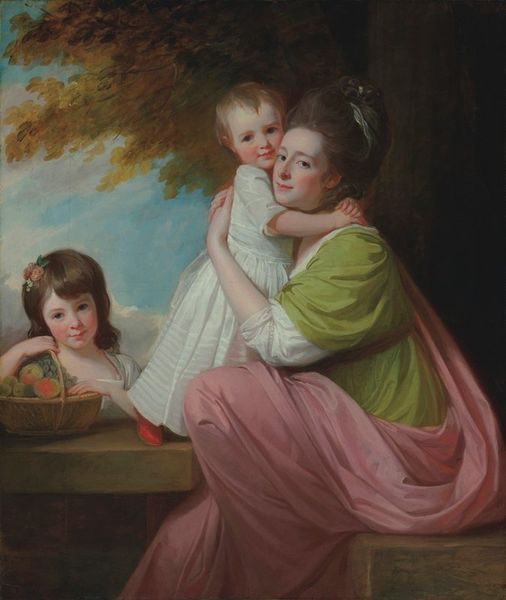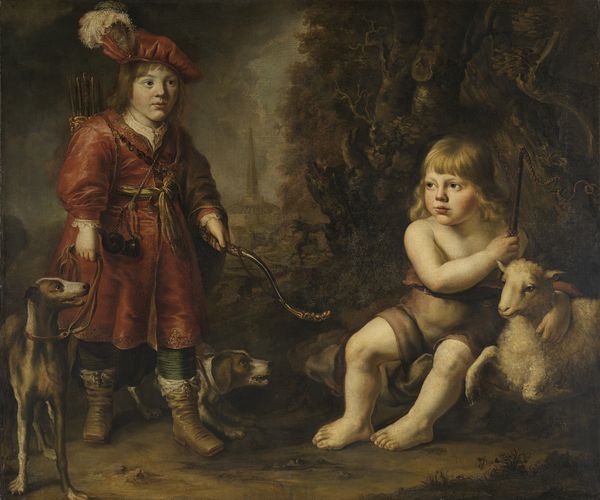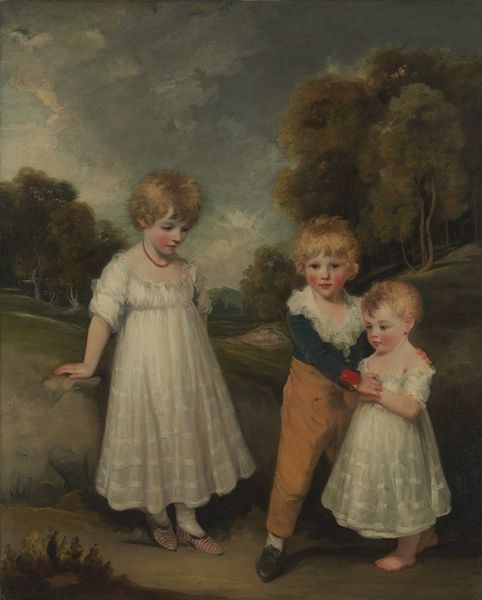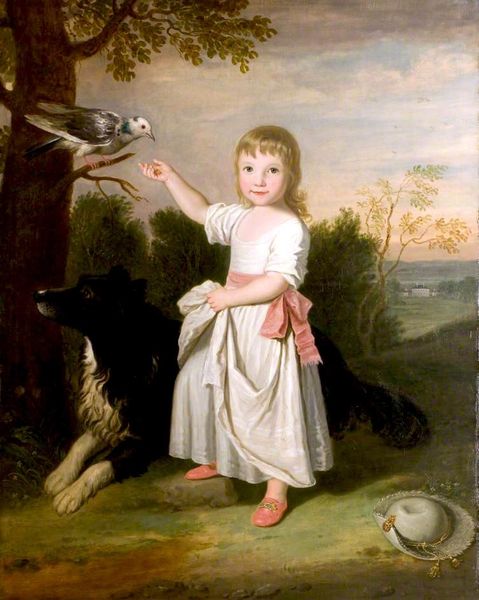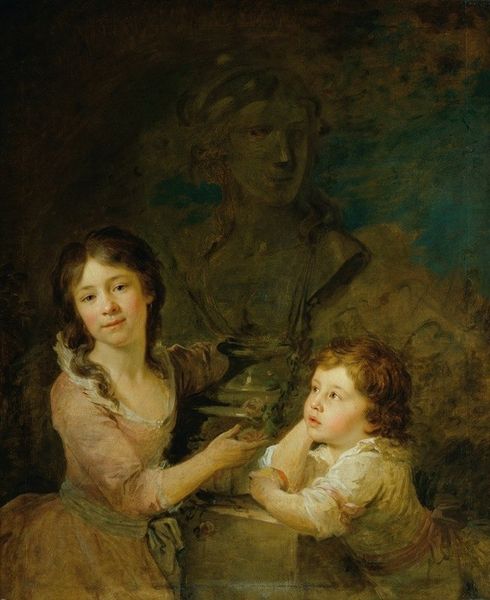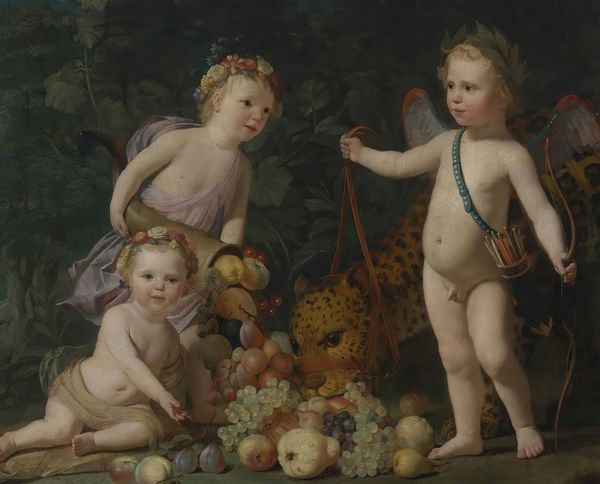
The Stewart Children (also known as Isabella and John Stewart) 1774
0:00
0:00
charleswillsonpeale
Thyssen-Bornemisza Museum, Madrid, Spain
Copyright: Public domain
Curator: Ah, “The Stewart Children,” painted in 1774 by Charles Willson Peale. A striking example of American portraiture during a period of growing national identity. Editor: Those peaches immediately draw the eye, don't they? And that simple white dress; the materiality of it makes the whole scene feel tangible. The glossiness suggests an opulence amid that darker backdrop. Curator: Indeed. Peale was keenly aware of how to project the status of his subjects. He became famous portraying prominent figures like George Washington, after all. In "The Stewart Children", he subtly uses elements like the idyllic landscape to invoke a sense of landed gentry. Notice how this landscape setting aligns the sitters with nature and liberty. Editor: Right, but look at those clothes! The texture! Consider what it took to create them. Those fine stitches and expensive dyes represent a whole network of production and labor. These materials weren’t conjured from thin air, and they weren’t accessible to everyone in 1774. These clothes are shouting affluence, which affects the reading of the whole canvas, not just the sitters in isolation. Curator: Absolutely. Peale understood the importance of symbolism. Those peaches can also represent health and prosperity, classical ideals embraced during the Enlightenment. The clothing acts as an outward display of the family's social standing. Peale wanted to situate his sitters, here Isabella and John, within a rising, prosperous class. Editor: All those carefully placed peaches... and consider the oil paint itself. What pigments did Peale use? Were they locally sourced? The layers of oil create a density and vibrancy... the physical properties carry their own story. They speak to the technical skill of painting itself as a form of material knowledge. Curator: It's interesting how Peale blends formal portraiture with a more relaxed, genre-like scene. It’s both posed and yet feels naturalistic. That tension is crucial to understanding the work's success in projecting a certain image of American aristocracy in that era. Editor: Looking at this has reminded me that even seemingly straightforward paintings hold layers of social and economic meanings within their materials and techniques. Curator: Yes, art gives such crucial visual insight into societal and political values through both symbolism and execution.
Comments
No comments
Be the first to comment and join the conversation on the ultimate creative platform.
